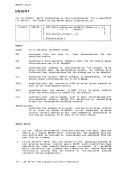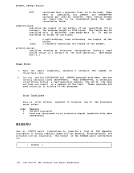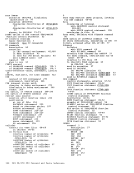All references to the sequence field of an input record refer to the
numeric data in columns
If no sequence numbers exist in an input file, a preliminary
only the
sequencing.
sequence numbers are checked while updates are being applied; an
error condition results if any sequence errors occur in the update
control statements, and warnings are issued if an error is detected in
the sequencing of the input file. Any source input records with a
sequence field of eight blanks are skipped, without any indication of a
sequence error. Such records may be replaced or deleted only if they
occur within a range of records that are being replaced or deleted
entirely and if that range has
There is no means provided for specifying a sequence field of blanks on
an
All
columns 1 and 2 of the 80-byte record, followed by one or more blanks
and additional, blank-delimited fields. Control statement data must not
extend beyond column
in columns
label placed in columns 73-75 (if
the
seqstrt
seqincr
label
first decimal sequence number to be used. The default
value is
specified.
is a one-to eight-digit numeric field specifying the
decimal increment for resequencing the output file.
The default is the "seqstrt" value.
is a three-character field to be duplicated in columns
73-75 of each source record if NJSEQ8 is specified.
The default value is the first three characters of the
input filename (fnl).
If
update file. If any valid control statement precedes it; the resequence
operation is suppressed.
first statement processed, the sequence numbers in the source file are
checked, and warning message
Section 2. CMS Commands






















































































































































































































































































































































































































